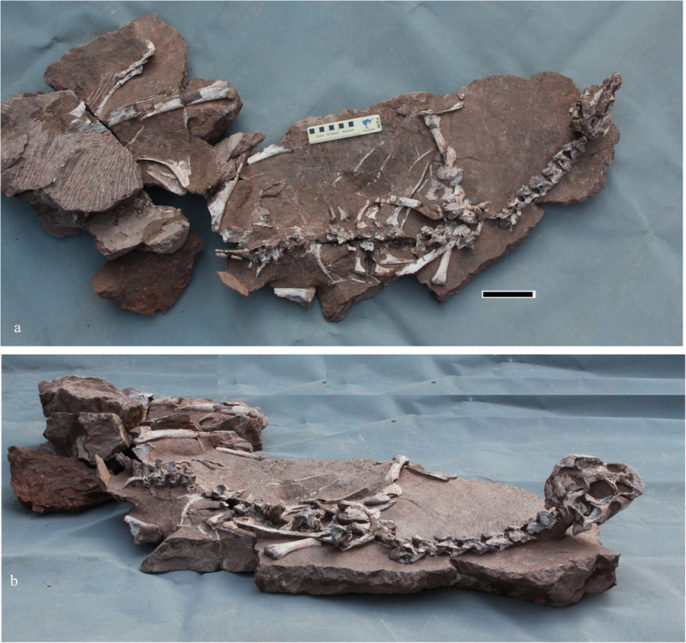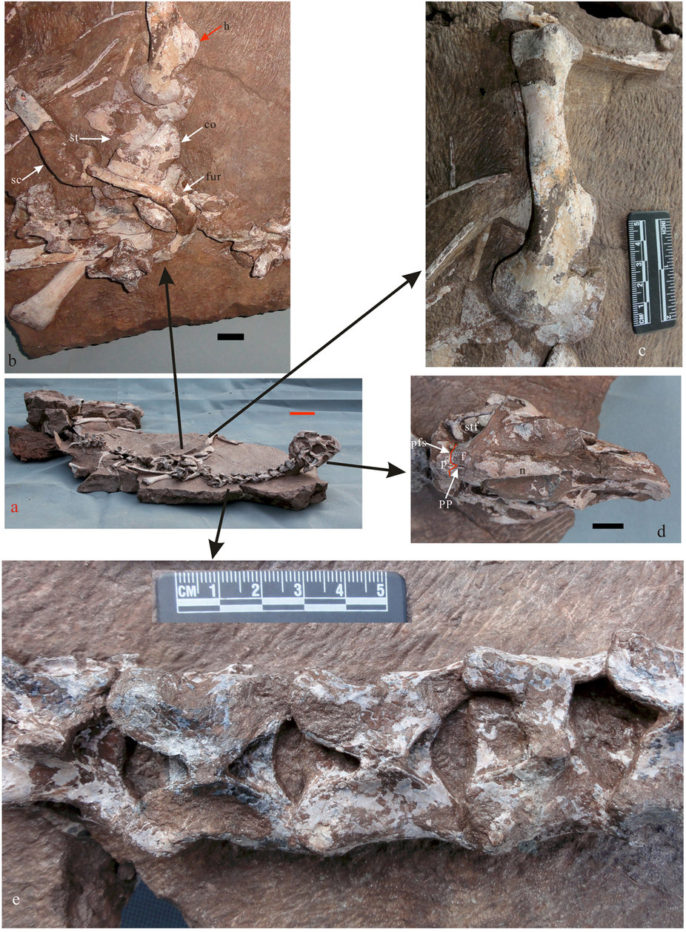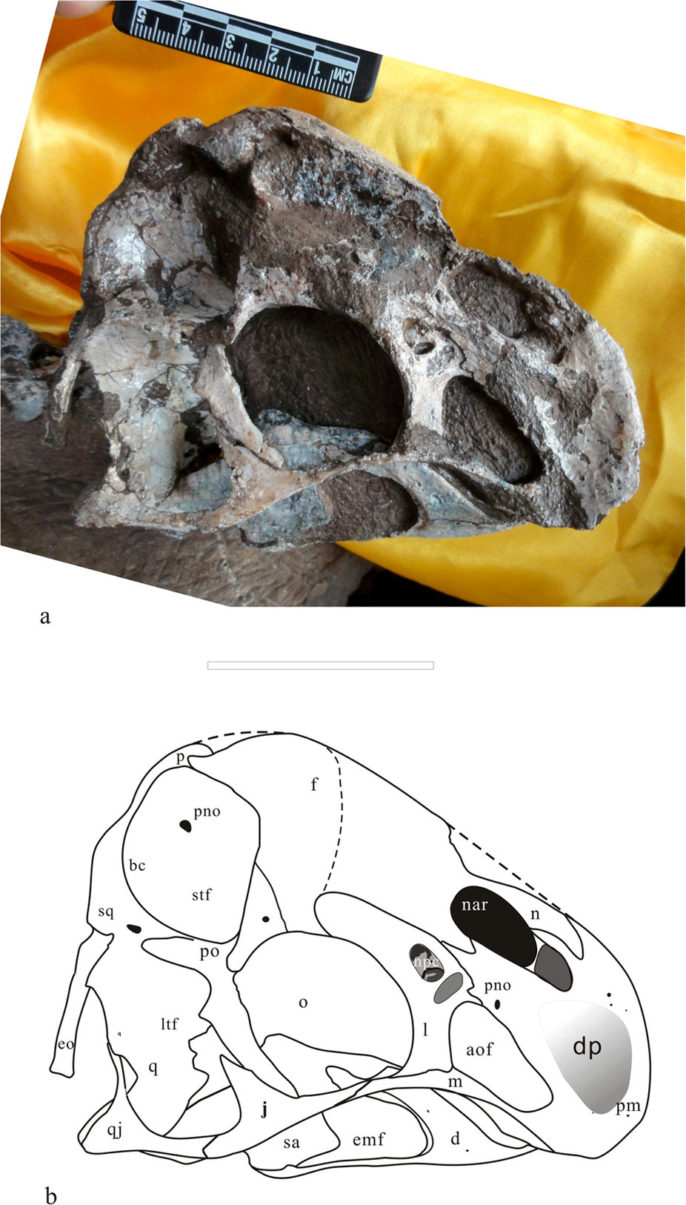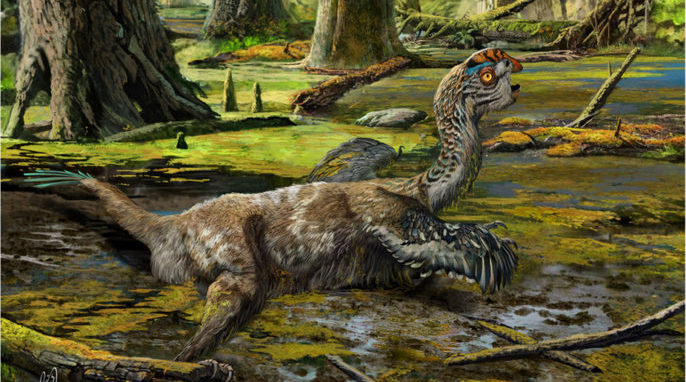By Kate Stone
Oviraptorosaurs are an odd-looking group of feathered, bird-like theropod dinosaurs. They tend to have short skulls and small, toothless mouths.
Now, an international team of paleontologists is reporting on a new oviraptorosaur discovery from Ganzhou, Tongtianlong limosus. The fossil is a remarkably well-preserved specimen. The animal seems to have died with its limbs splayed to the sides and its head raised. Tongtianlong is a bit different from other species. It has a unique dome-like skull.

Oviraptors were mysterious and misunderstood for a long time, but they have become much better understood in the last 10 years with the discovery of many new fossils in Asia and North America. In total, more than 35 oviraptorosaur genera are now known. Many of the recent discoveries have come from China, particularly from three areas of the country: northern China (including Inner Mongolia and western Liaoning Province), central China (Henan Province), and southern China (including Guangdong and Jiangxi provinces). The Ganzhou area of southern China, in particular, is giving up many new oviraptorosaur fossils.
This dinosaur died in a strange position. What do you think happened?
Oviraptors were so named because they were first found near fossilized nests of dinosaur eggs. At first, it was thought that these dinosaurs were egg thieves that died while raiding nests. However, evidence quickly suggested that the oviraptors died while protecting their own nests, not raiding the nests of others. Instead of being egg thieves, oviraptors were diligent parents.

Paleontologists generally believe that oviraptors were successful creatures during their time on Earth, as these dinosaurs came in many different sizes during the Cretaceous of Asia and North America, ranging from the size of a turkey to almost 7 meters long from nose to tail. These feathered theropods, once so poorly understood, are now recognized as important components of terrestrial food webs in the northern continents during the final 15 million years of the Age of Dinosaurs.
Many people are wondering why the latest oviraptor died in such an odd position. Was it protecting a nest from predators or from a natural disaster? Was it stuck in the mud? We may never know.

Reference
Featured image: An artistic reconstruction showing the last-ditch struggle of Tongtianlong limosus as it was mired in mud—one possible, but highly speculative, interpretation for how the specimen was killed and buried. Drawing by Zhao Chuang.
GotScience is published by the nonprofit Science Connected. Stories like this one are made possible by donations from readers like you. Please donate today.




